
TARGET 100414
Working in Hell
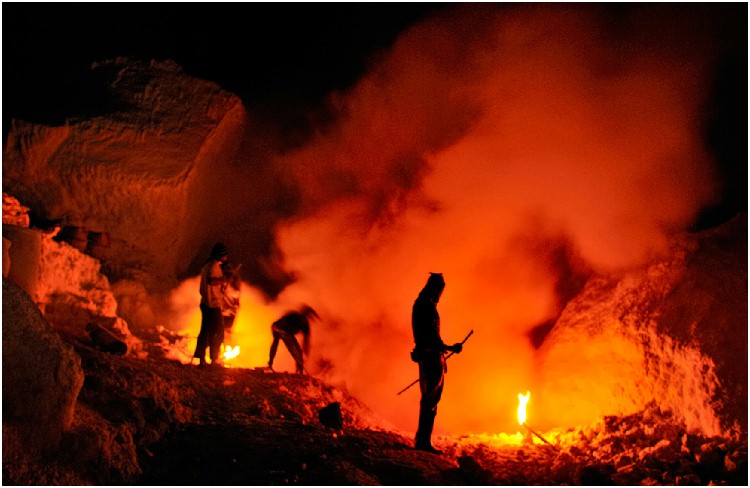
Working in Hell
These miners, working in the intense poisonous gases within a volcano, have nothing more than handkerkiefs for protection.
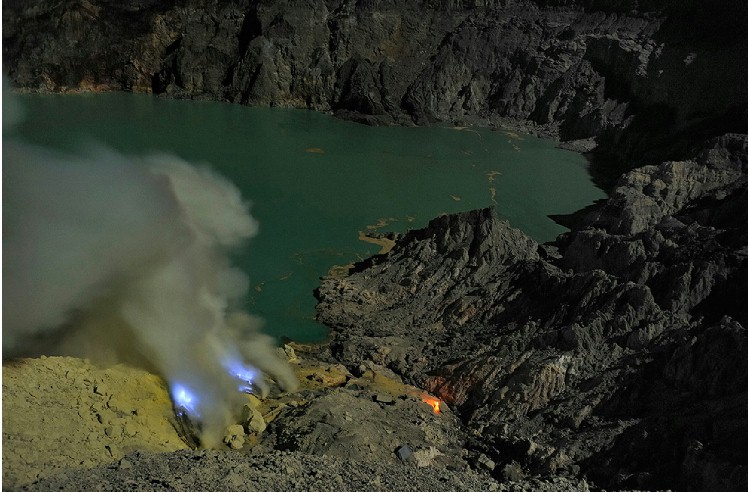
The crater and its lake
This is a lake in the center of Kawah Ijen volcano. Kawah Ijen is one of several volcanoes located in the huge ancient Ijen caldera in East Java, Indonesia.
The ancient caldera is today largely filled with coffee plantations between the newer volcanoes. This one volcano, Kawah Ijen, harbours a large warm acidic crater lake and an active sulphur mine. The sulfur mine and the people who work in it are the subject of this week's target.
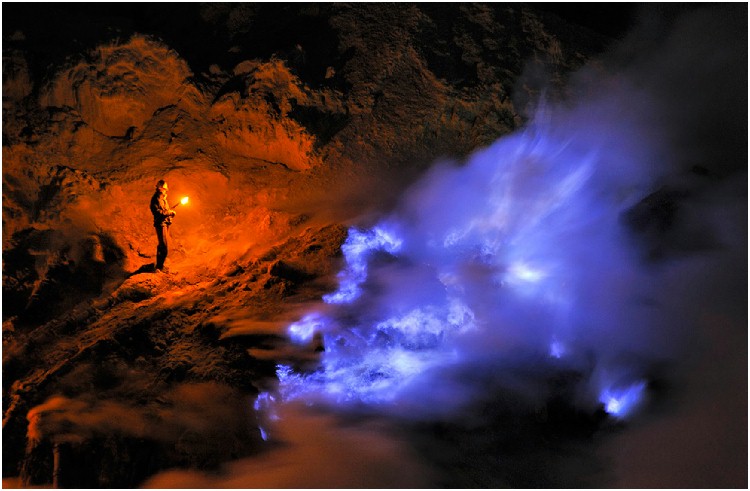
Inside the crater at night
In the photo above, a sulfur miner stands inside the crater of the Kawah Ijen volcano at night, holding a torch, looking towards a flow of liquid sulfur which has caught fire and burns with an eerie blue flame. The blue flame is very hot and can set fire to the worker's clothes, as well as burn their skin. It is also almost impossible to see the flames during the day, so for safety, many of the workers would rather work the mine at night.
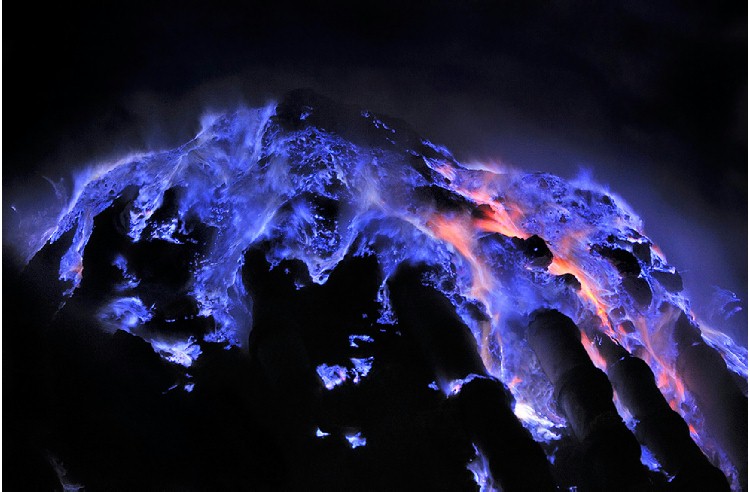
When the sulfur burns, the light is so dim that it barely lights up it surroundings. So the eerie flames are seen against almost total darkness.
When sulfur burns, it gives off an extremely strong smell of rotten eggs. When it burns, it produces sulfur two invisible gases: sulfur dioxide and sulfur trioxide. When these gasses touch the water in the air, they mix with it to form sulfuric acid. Since the gases are heavier than air, they tend to settle to the lake below, which by now has turned into a lake of sulfuric acid. Birds which fly into the crater are suffocated by the gases and fall into the lake, where they are disolved by the acid.
The gases also mix with the body's natural moisture, so when the miners sweat, they get covered with acid, and when they breathe, the moisture of the lining of their lungs turns to sulfuric acid, as well.
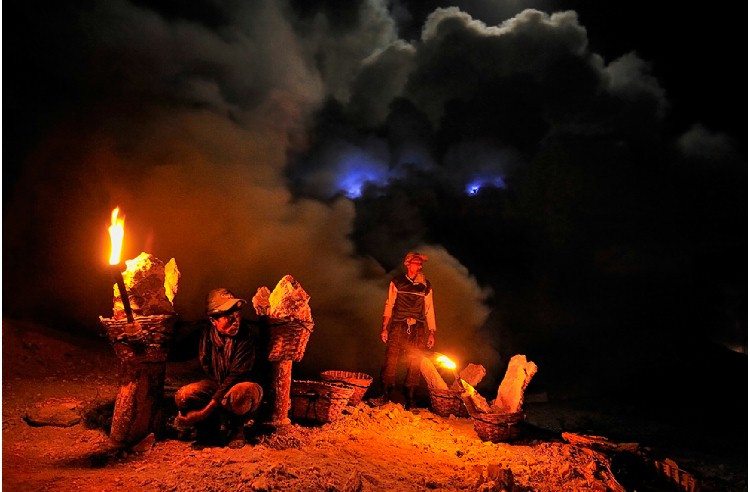
The workers set up camps outside the volcano in order to come out for fresh air and to refresh their strength.
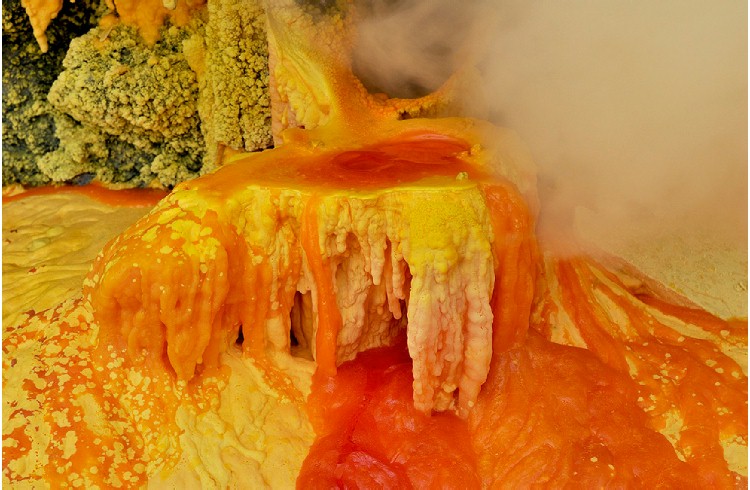
Molten sulfur flows around the volcano and cools into some very weird shapes. Here, it flowed over a barrel, long ago completely encasing it.
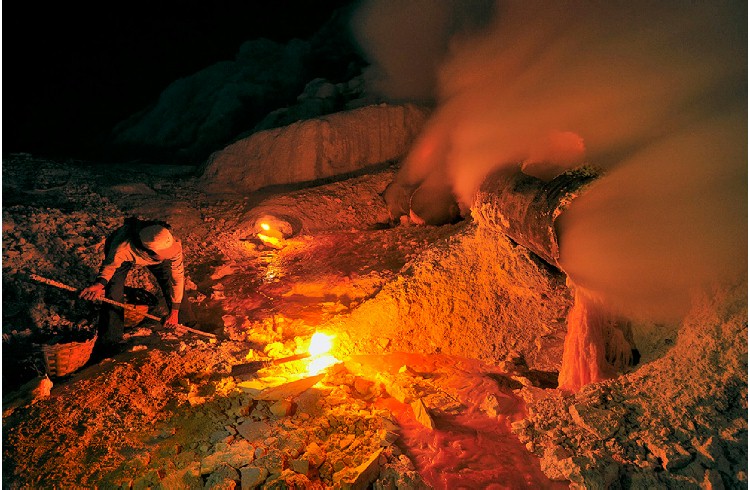
Sulfur melts at the boiling point of water (100 degrees centigrade / 212 degrees fahrenheit) Many times, when the miners find a huge deposit of pure sulfur, they will set fire to it, turning it into a liquid. It then flows down to collect, cool and resolidify in easier-to-reach locations. They then pry the sulfur up and break it into large blocks
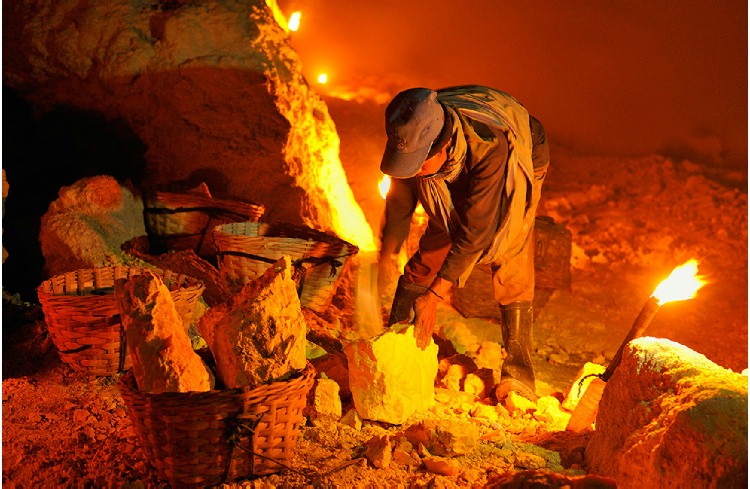
A miner works on a block of sulfur, to fit it into the baskets used to carry the mineral out of the volcano.
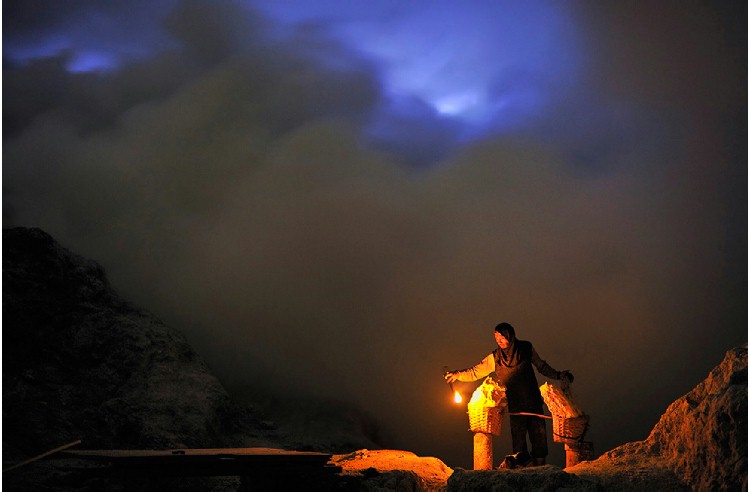
A worker will balance two overfilled baskets, each weighing around a hundred pounds, on his shoulders in order to carry them out of the volcano.
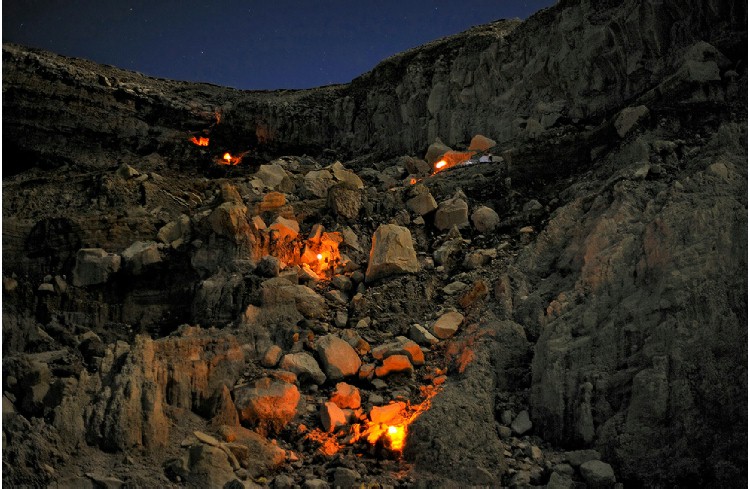
When he gets to the rim, there is no road out. Just when he went in, he climbs over huge bolders left from eruptions of the volcano. He first climbs up an average of 650 feet (200 meters) to the rim and then descends from boulder to boulder down the 2,800 meter (9,180 feet) side of the volcano to the weighing station, below.
In one day, a man can gather and deliver up to 360 kg (750 pounds) of sulfur to the weighing station at the bottom of the volcano.
The miners are paid according to the weight of sulfur transported; as of September 2010, the typical daily earnings were equivalent to approximately $13.00 US. The miners often use insufficient protection while working around the volcano and are susceptible to numerous respiratory complaints, but the pay is among the highest in the area, so they are willing to do the work to support their families.
The sulfur is transported to Banjuwangi, 37 km (23 mi) away where it is processed into slabs and sold for use in vulcanizing rubber or refining sugar.FEEDBACK MAP
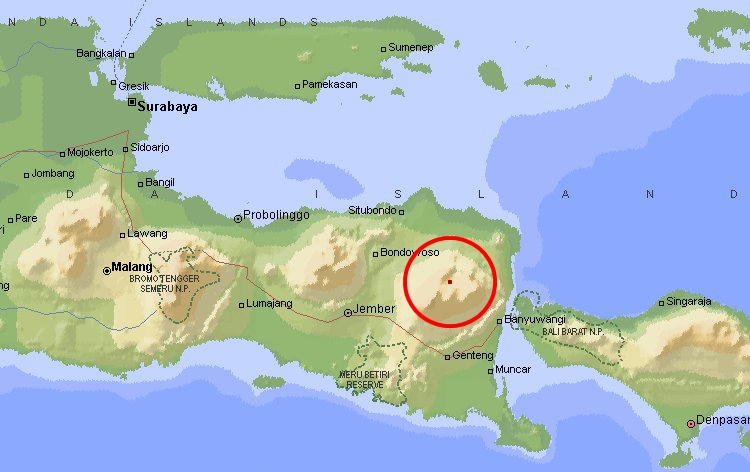
If you got impressions for which this feedback is insufficient, please take a look at the following web sites for more:
Photovolcanica.com
Wikipedia
Boston.com
Many thanks to Photographer Olivier Grunewald for these pictures, who has made several trips into the sulfur mine in the crater of the Kawah Ijen volcano in East Java, Indonesia, bringing with him equipment to capture surreal images lit by moonlight, torches, and the blue flames of burning molten sulfur.